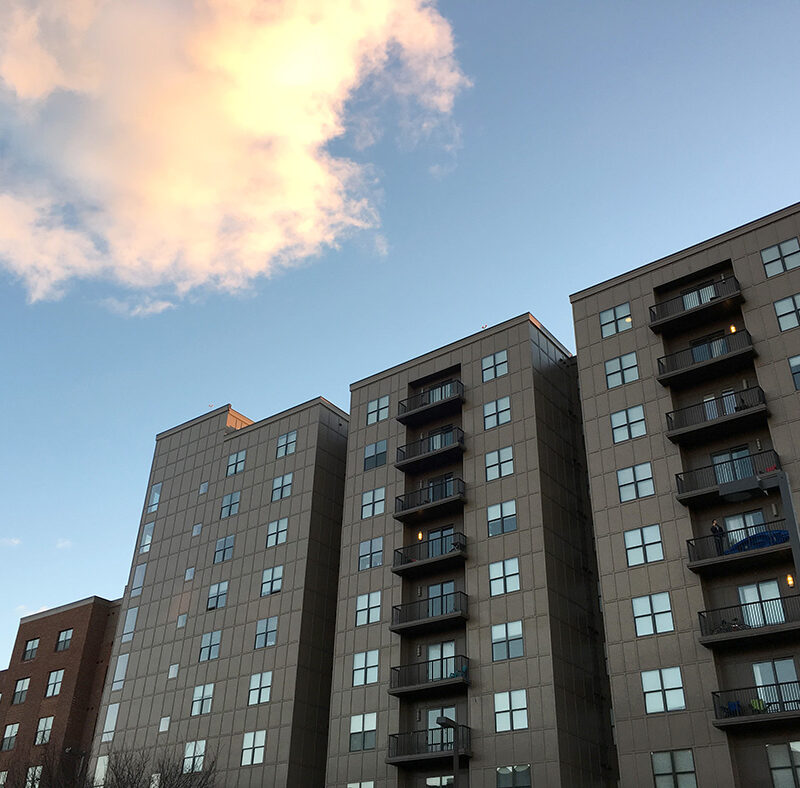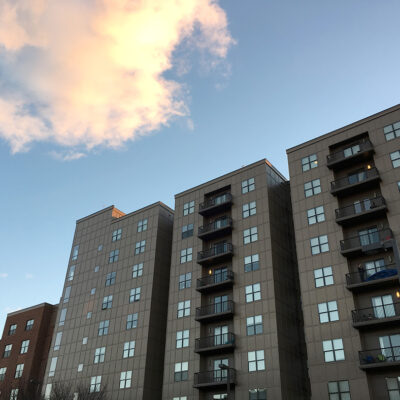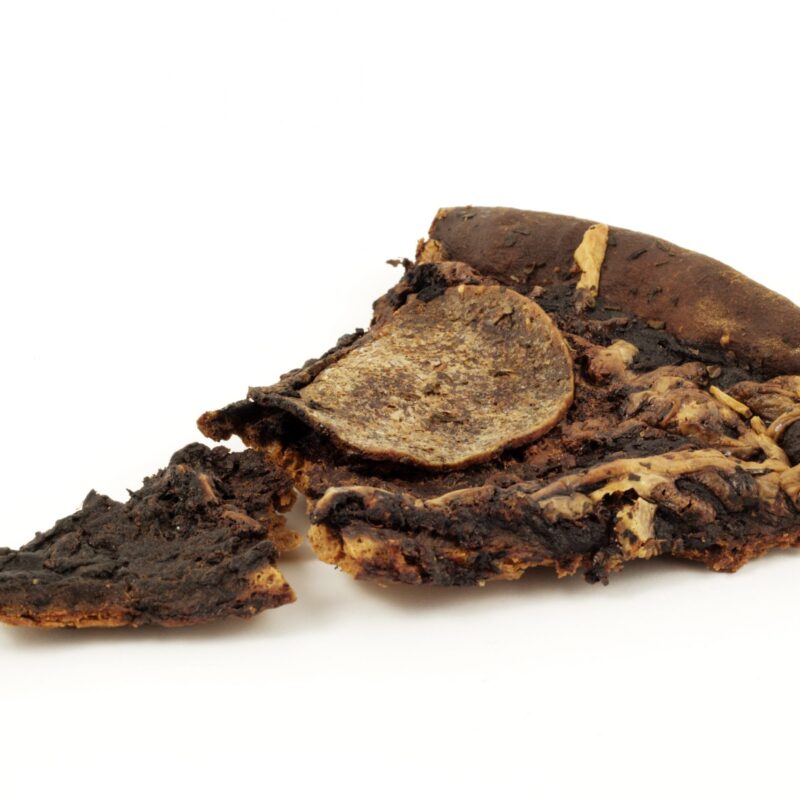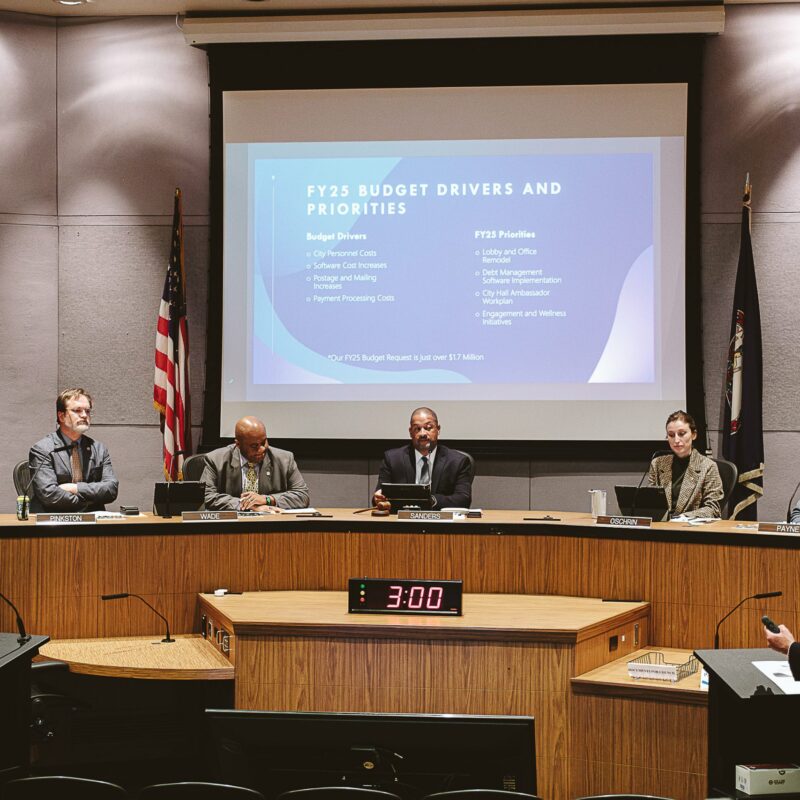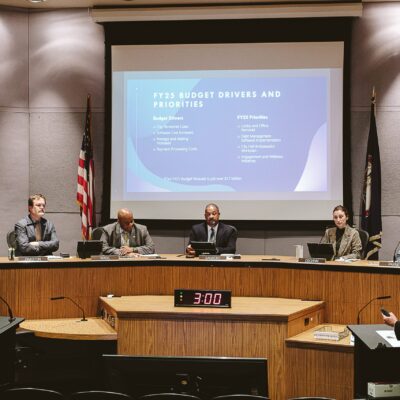There are 156 miles of roads in Charlottesville. Add about 87,000 licensed drivers to those twists and turns—thousands of moving parts in a small space—physics (and common sense) tells you that nothing good is going to come of it.
 In 2006, the area saw more than 4,000 accidents—a mix of one-car, two-car, many-car and few-car, not to mention all kinds of fender benders, pile-ups and, tragically, fatalities. From a Barracks Road parking lot to an empty stretch of Route 29, accidents can happen anywhere—but there are a few places where they seem a bit more likely to occur.
In 2006, the area saw more than 4,000 accidents—a mix of one-car, two-car, many-car and few-car, not to mention all kinds of fender benders, pile-ups and, tragically, fatalities. From a Barracks Road parking lot to an empty stretch of Route 29, accidents can happen anywhere—but there are a few places where they seem a bit more likely to occur.
Take Rio Road, for instance. Please. The city’s signal-saturated, perpetual jam of a road dines on impatient and unlucky drivers (and lands fifth on our list this year). Using public records from city and county traffic and law enforcement, C-VILLE has taken a look at last year’s most dangerous roads, judging by the number of reported accidents. Stay alert, folks—a ton of steel is a rather thin line between a good day and a very, very bad one.
Richmond Road/250 East: 231 accidents

Richmond Road/250 East
|
“For the most part, accidents on the Ivy and Richmond roads happen within a quarter-mile of the 250 Bypass,” says Lieutenant John Teixeira of the Albemarle County Police Department. The same two roads that yielded 97 crashes in 2004 combined for 341 in 2006.
Ivy Road/250 West: 110 accidents

Ivy Road/250 West
|
Teixeira is quick to name the cause of accidents on Ivy Road. “Traffic from St. Anne’s, commuters, people driving to Ivy and Crozet,” he recites immediately.
The Albemarle County Police Department rotates patrols among spots with high numbers of violations, and the portion of the 250 Bypass at Ivy Road gets a lot of attention. On December 6, more than 80 summonses were written in this spot for a variety of traffic violations.
Thomas Jefferson Parkway/Route 53: 69 accidents

Thomas Jefferson Parkway/Route 53
|
In December, Steven Blaine, lawyer for Biscuit Run developers Forest Lodge LLC, mentioned several possible improvements to roads around the county’s impending development behemoth, including the expansion of Route 20 to four lanes to Route 53, also called the Thomas Jefferson Parkway.
C-VILLE reported in 2005 that the Thomas Jefferson Parkway claimed 89 accidents and one life in the preceding year. Though 2006 saw a decrease in accidents on the parkway, the year was, sadly, no less fatal there.
Earlysville Road: 50 accidents

Earlysville Road
|
This “long and winding road” isn’t as harmonious as The Beatles made ’em out to be. Earlysville Road snakes behind the Charlottesville-Albemarle Airport and uncoils out towards Free Union. The vast majority of accidents on this road occur between Twin Bridges and the Earlysville General Store.
Sidenote: Earlysville Road got a little extra TLC from drivers last July when a sinkhole roughly 9′ deep reopened on Route 29 near Airport Road. Many determined (or impatient) drivers cut through the UVA Research Park or took Airport Road to reach Earlysville and Hydraulic roads.
Seminole Trail/29N and Rio Road: 42 accidents

Seminole Trail/29N and Rio Road
|
The intersection of Seminole Trail and Rio Road is the best example of what Teixeira calls the problem with accident reports: Everything is left to the discretion of the individual filling out the report, and location means different things to different people. Some people reference block numbers, some landmarks.
So, while 42 accidents occurred precisely within the intersection of Seminole and Rio, there is more to the tale. The top three accident locations for December 2006 were the intersection of Seminole Trail at Seminole Court, the entrance to Shopper’s World and Rio. These three spots combined for 286 accidents in the final month of 2006, an average of more than nine per day.
Seminole Trail/29N and Hydraulic Road: 31 accidents

Seminole Trail/29N
and Hydraulic Road |
Behind a surprisingly small number of accidents (compared to 72 accidents two years ago) looms the threat of a significant increase in traffic volume that will most likely accompany the construction of Albemarle Place.
“You’re gonna see more problems near Hydraulic,” says Teixeira. “Congestion will definitely increase when construction starts.”
The all-inclusive, “shop where you live” nature of Albemarle Place may keep more pedestrians out of high-volume traffic spots. In 2006, six pedestrians were injured in the City of Charlottesville after being struck by cars. One was crossing Hydraulic Road to the Kroger grocery store, according to spokesman Ric Barrick.
250 Bypass and McIntire Road: 13 accidents

250 Bypass and McIntire Road
|
A quick question of physics: If Driver A is traveling steadily along the 250 Bypass at a speed of 35 miles per hour, and Driver B attempts to turn from McIntire Road, but stops in the middle of the intersection to check for oncoming traffic, how much is this going to hurt?
“Everyone is looking backwards and their vehicles are not moving,” says Sergeant Tito Durrette of the Charlottesville Police Department’s traffic division, proving once and for all that, to successfully move forward, you should never look back. Literally.
Barracks Road and Emmet Street: 10 accidents

Barracks Road and Emmet Street
|
An average day sees 39,000 vehicles pass between the Barracks Road Shopping Center and the 250 Bypass. In the midst of it all is the intersection of Barracks Road and Emmet Street, which shows a decrease in accidents since our last look (12 in 2004), but continues to wreak its fair share of havoc.
Sergeant Durrette holds the multiplicity of turning lanes responsible. “The accidents aren’t in the intersection,” explains Durrette. Rather, “drivers get waved to a certain lane and get struck in the process.”
Not all threats were confined to the intersection. On October 3, two men assaulted a teenager in the parking lot of the Barracks Road Shopping Center after the boy gave one man a lift from the 7-Eleven at the intersection of Route 29 and Hydraulic Road.
University Avenue/ Emmet Street/Ivy Road intersection: 7 accidents

University Avenue/
Emmet Street/Ivy Road |
In 2005, each of these three roads averaged at least 15,000 vehicles per day, a total just a bit larger than the number of people that turned out to watch the Cavaliers trounce Maryland at the John Paul Jones Arena in January. Not all of those Cavs fans are drivers, of course. But a large portion of those drivers are Cavs fans.
For a few bucks, patrons of the John can park their Wahoo-mobiles at the same garage as UVA students and commuters, adjacent to the Cavalier Inn on Ivy Road. But that parking pass may cost an unlucky few more than they bargained for; multiple entry points onto Emmet Street and Ivy Road make for a lot of merging traffic at a saturated intersection, and impatient drivers misjudge signals. “There are a lot of rear-end collisions where drivers think a light has turned green,” says Durrette.
